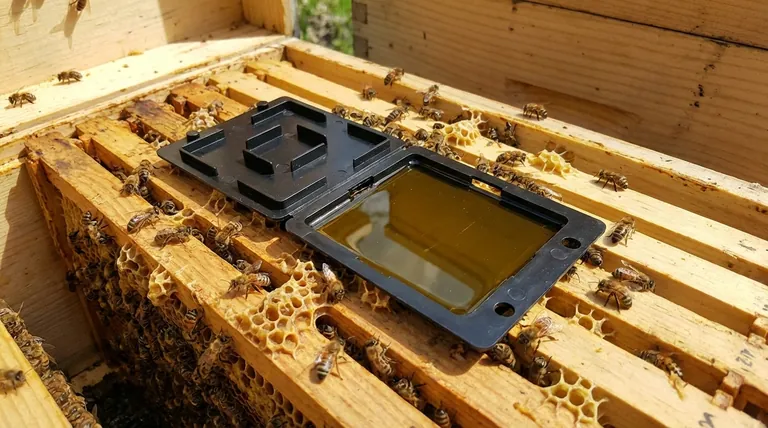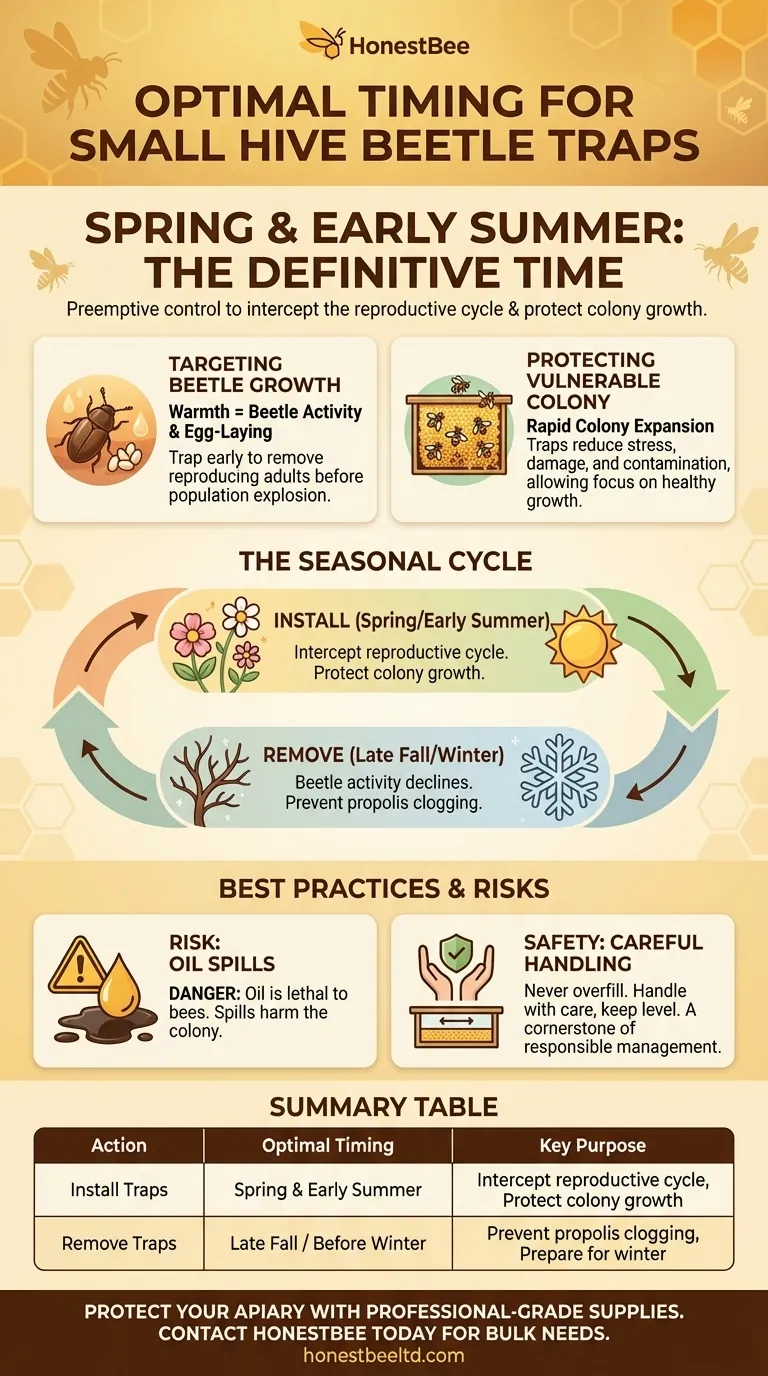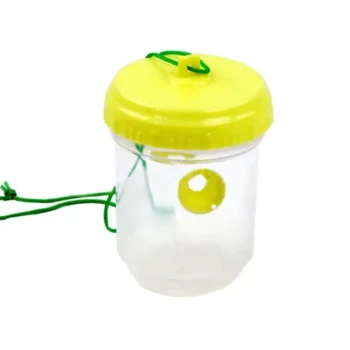The definitive time to deploy beetle traps is in spring and early summer. This strategic timing is designed to control the Small Hive Beetle (SHB) population preemptively, addressing the threat before it can escalate and cause significant damage to a honeybee colony during its most critical growth period.
The core principle of effective beetle management is not just trapping, but when you trap. Deploying traps in spring intercepts the pest's reproductive cycle, while removing them in late fall prevents them from becoming ineffective and cluttered with propolis.

Why Timing is Critical for Beetle Control
Effective pest management in beekeeping is about understanding an opponent's lifecycle. For the Small Hive Beetle, spring is the season of opportunity, which means it must be your season of prevention.
Targeting Beetles During Population Growth
Small Hive Beetles thrive in warm, humid conditions. As temperatures rise in the spring, adult beetles begin to actively seek out hives to lay their eggs.
By placing traps during this period, you catch these early-arriving beetles. This action is crucial because it removes reproducing adults from the hive before their population can explode into an overwhelming infestation.
Protecting the Colony's Most Vulnerable Stage
Spring and early summer are also when the bee colony is rapidly expanding its brood. A heavy beetle presence can stress the bees, damage comb, and contaminate honey.
Early trapping helps ensure the colony can dedicate its resources to healthy growth rather than fighting off a preventable pest crisis.
Understanding the Trade-offs and Best Practices
While essential, beetle traps are not without risks. Proper handling is non-negotiable to ensure you are only targeting the pest, not your bees.
The Danger of Oil Spills
Many common beetle traps use mineral oil or vegetable oil to drown the beetles. This same oil is lethal to honeybees if spilled inside the hive.
Careless handling during installation or removal can easily lead to a spill, harming the very colony you are trying to protect.
Best Practices for Safe Handling
To mitigate this risk, never overfill the traps. A small amount of oil is sufficient.
Handle the traps with extreme care, keeping them level to avoid spilling their contents onto the frames or bees below. This simple discipline is a cornerstone of responsible hive management.
The Seasonal Cycle of Beetle Trapping
Knowing when to put traps in is only half the equation. You must also know when to take them out.
When to Install Traps
Place your traps in the hive during spring and early summer. This proactive timing is the most effective way to keep beetle numbers low throughout the active season.
When to Remove Traps
It is best to remove traps once cold weather sets in. As winter approaches, beetle activity and egg-laying naturally decline.
Furthermore, bees will begin to insulate their hive with propolis, a sticky resin. They will often seal the openings of beetle traps, rendering them completely useless. Removing traps in the fall prevents this and keeps your equipment clean for the next season.
Making the Right Choice for Your Goal
Your specific trapping strategy should align with your hive management goals for the season.
- If your primary focus is proactive prevention: Deploy traps in early spring as soon as temperatures consistently rise to get ahead of the beetle's reproductive cycle.
- If your primary focus is managing an existing problem: Use traps immediately during the warm seasons and maintain them consistently to reduce the current beetle load.
- If your primary focus is preparing for winter: Remove all beetle traps in the fall before bees begin sealing the hive with propolis.
By aligning your trapping schedule with the beetle's life cycle and your colony's needs, you can effectively protect your hive's health and productivity.
Summary Table:
| Action | Optimal Timing | Key Purpose |
|---|---|---|
| Install Traps | Spring & Early Summer | Intercept beetle reproductive cycle, protect colony growth |
| Remove Traps | Late Fall / Before Winter | Prevent propolis clogging, prepare for winter |
Protect Your Apiary with Professional-Grade Beetle Traps from HONESTBEE
Don't let Small Hive Beetles compromise your colony's health and honey production. HONESTBEE supplies durable, effective beekeeping supplies and equipment designed specifically for the needs of commercial apiaries and distributors. Our wholesale-focused operations ensure you get the reliable pest control tools you need, when you need them.
Contact HONESTBEE today to discuss your bulk supply needs and secure the right beetle traps for your proactive hive management strategy.
Visual Guide

Related Products
- Black Plastic Beetle Barn Hive Beetle Trap for Beehives
- Reusable Clear Small Hive Beetle Traps for Beehives Beetle Trapping Tools
- Reusable Aluminium Beetle Trap for Small Hive Beetles Silver Bullet
- Removable Washable Hive Beetle Trap Attractants for Small Hive Beetles
- Plastic Beetle Blaster Trap Beekeeping Tools and Supplies
People Also Ask
- Why are hive beetle traps important for beekeepers? Protect Your Hive from a Devastating Infestation
- What is the recommended number of beetle traps per hive? Optimize Your Hive's Beetle Defense
- What should be done if a hive shows signs of a small hive beetle infestation? Protect Your Hive Now
- How should beetle traps be placed in the hive? Achieve Perfect Flush Placement for Maximum Control
- What are the chemical-free options for trapping hive beetles? Control Pests Without Chemicals



















